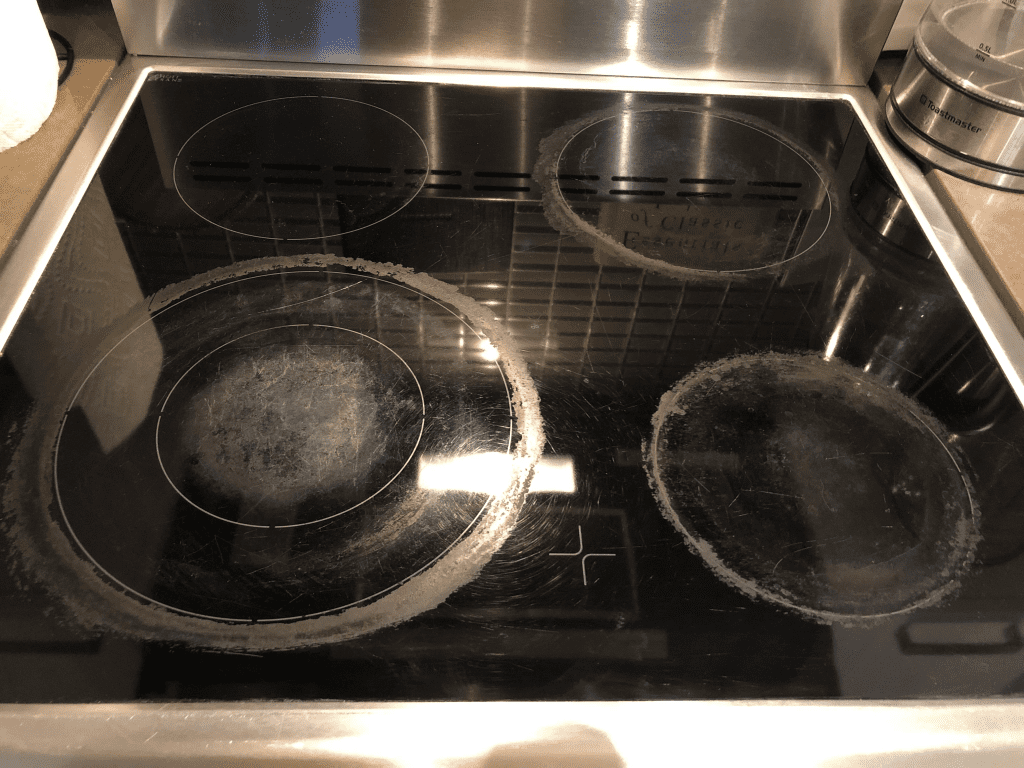Glass stovetops offer a sleek and modern look in any kitchen. They’re efficient, easy to use, and often more affordable than gas stoves. However, keeping that beautiful surface spotless can be quite a challenge. If you own a glass cooktop, you know how frustrating it is to deal with those stubborn, burnt-on stains from spills and boil-overs. Fortunately, there’s a simple and effective cleaning method that can restore your stovetop’s shine without harsh chemicals or heavy scrubbing. In this guide, we’ll show you how to make your glass stovetop clean again using everyday household items.
Why Glass Stovetops Are Popular—and Challenging to Clean

Glass stovetops are popular for a reason. Their flat, smooth surface makes them easy to wipe down, and they complement a wide range of kitchen designs. However, they’re also prone to burnt-on stains from even the smallest spills. Water, oil, and food particles can leave behind unsightly marks that seem impossible to remove with just a cloth and soap. Over time, these stains can dull the surface and make your cooktop look worn.
The key to maintaining a spotless glass stovetop lies in using the right cleaning products and techniques. Thankfully, you don’t need expensive commercial cleaners to achieve this. With a few common ingredients you probably already have at home, your stovetop will be sparkling like new again.
What You’ll Need to Clean Your Glass Stovetop
Before we dive into the step-by-step cleaning process, let’s gather the essentials. Here’s what you’ll need:
- Baking soda
- Distilled white vinegar
- Liquid dish soap
- Hot water
- A spray bottle
- A towel
- A soft brush or sponge
- Microfiber cloth
These simple ingredients work together to break down tough stains and gently lift residue without scratching the delicate surface of your glass stovetop.
Step 1: Spray the Stovetop with Vinegar
To begin the cleaning process, fill a spray bottle with distilled white vinegar. Vinegar is a fantastic natural cleaner because of its ability to cut through grease and grime. It’s also safe to use on glass surfaces.
Generously spray the entire stovetop with vinegar, making sure to cover all the stained areas. The vinegar will start loosening up any stuck-on food particles or oils, making them easier to remove later.
Step 2: Sprinkle Baking Soda Over the Surface
Once your stovetop is coated with vinegar, it’s time to add baking soda. Baking soda is a gentle yet powerful abrasive that helps scrub away stains without scratching the glass. Sprinkle a generous amount of baking soda over the entire stovetop, focusing on the areas with the most buildup.
The combination of vinegar and baking soda will create a bubbling reaction, which helps to further break down any burnt-on residue.
Step 3: Prepare a Soapy Hot Water Towel
Next, you’ll need to prepare a hot water towel to lay over the stovetop. In a bucket or sink, fill it with extremely hot water and add a few drops of liquid dish soap. Dish soap is designed to break down grease, making it an ideal partner for this task.
Soak the towel in the hot soapy water, making sure it’s fully saturated. To protect your hands from the heat, wear gloves while handling the hot towel.
Step 4: Lay the Hot Towel Over the Stovetop

Gently wring out the towel, but don’t dry it completely—you want it to be damp but still full of heat. Now, lay the towel flat across the entire stovetop. The hot, soapy water combined with the baking soda and vinegar will work together to loosen stubborn stains and grime.
Leave the towel on the stovetop for 15 to 20 minutes. During this time, the heat from the towel will help soften and lift any baked-on debris, making it easier to wipe away.
Step 5: Scrub Stubborn Stains with a Soft Brush
After letting the towel sit for 15 to 20 minutes, remove it and check the stovetop. For any stains that remain, use a soft brush or sponge to gently scrub the surface. The goal is to remove the buildup without scratching the glass, so avoid using anything too abrasive.
Focus on the areas where the stains are the most stubborn, and scrub in circular motions to lift the residue. If the stovetop is in particularly rough shape, you may need to repeat this process.
Step 6: Final Vinegar Spray and Wipe with Microfiber Cloth
Once you’ve scrubbed away the stains, give the stovetop a final spray of vinegar. This will help remove any remaining residue and leave the glass streak-free.
Using a microfiber cloth, wipe down the entire surface. Microfiber is ideal for this job because it picks up any leftover particles while leaving the glass shiny and polished.
Maintaining Your Glass Stovetop

Now that your glass stovetop looks brand new, it’s important to keep it clean and prevent future stains. Here are a few tips for maintaining that sparkling surface:
- Wipe up spills immediately. The longer spills sit on the glass, the harder they are to remove. Try to wipe up any messes as soon as they happen.
- Use gentle cleaners. Harsh chemicals or abrasive scrubbers can damage your stovetop over time. Stick to natural cleaning methods like vinegar and baking soda for the best results.
- Invest in stovetop cleaner. If you prefer commercial products, there are special glass stovetop cleaners available that are designed to clean without scratching.
- Avoid dragging cookware across the surface. Scratches can happen easily on glass surfaces, so always lift your pots and pans when moving them.
Conclusion: Enjoy Your Shiny, Clean Stovetop
Cleaning your glass stovetop doesn’t have to be a chore. With just a few household items and a little patience, you can restore your stovetop’s shine and keep it looking new for years to come. Whether you’re dealing with everyday spills or stubborn, burnt-on stains, this simple method using baking soda, vinegar, dish soap, and hot water is all you need to get the job done.
So next time you see those pesky stains, don’t stress. Follow this easy guide, and your glass stovetop will be spotless and gleaming in no time.


